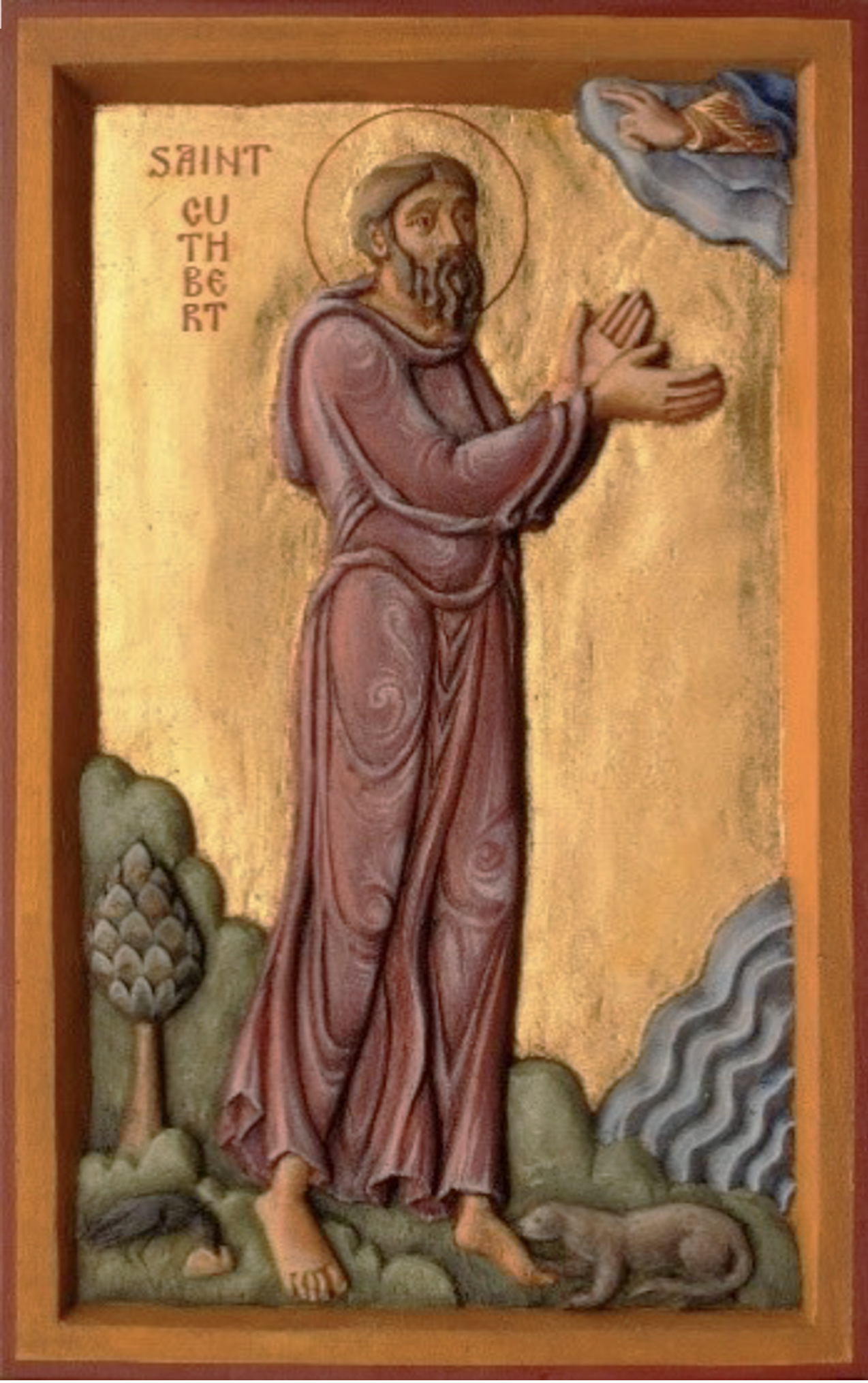St Cuthbert
St Cuthbert was born in 634, in Northumbria. He was educated at Melrose Abbey, in the Scottish borders. Much of what we know about him came from the book written about him by Bede, often known as the Venerable Bede. [1] It is from Bede that we have received much information regarding the Church around that time. It was also from Bede that we first heard of St Ninian, although it would be another five hundred years before St Aelred would write the Life of St Ninian. [2] Bede wrote the Life of Cuthbert around the year 721.
St Cuthbert became a monk at Lindisfarne (Holy Isle), where he eventually became the Prior. Later, in a search for greater solitude in which to give himself totally to prayer, he moved to a nearby island and lived alone as a hermit. That lasted until 685 when he was called out of solitude to be a bishop. However, his time as a bishop lasted only two years — he died in 687. [3]
In these few lines it is not my intention to offer a considered account of the life of St Cuthbert, but merely to present some of the observations made by Bede. Bede shows us how Cuthbert desired the life of prayer above all else. He knew what it was to live in God’s presence, and the need to search for a fuller appreciation of that presence. This was what he delighted in. [4]
Yet, Bede also enables us to see that Cuthbert did this in order to live fully his vocation; it was not personal preference; therefore, when he was later called upon to leave his solitude and become a bishop, he did so. During the part of his life in which he was active in the pastoral ministry it was said that he would be away from his monastery for weeks, preaching and teaching people all around. [5] In fact, the way in which Bede expressed it may be helpful for us at St Cuthbert’s and St Ninian’s –
he strove to convert people for miles around from their foolish ways to a delight in the promised joys of heaven. [6]
Sometimes I wonder if we are perhaps so serious about the Faith that we forget to be joyful. Let Cuthbert be our example.
[1] There is an ikon of Bede, as well Cuthbert, in the ikon niche at St Ninian’s church. 5
[2] A copy is available in St Ninian’s parish library
[3] D.H.Farmer, The Age of Bede (London: Penguin Books, 1965, rev.d1998) pp.9-10
[4] Bede, Life of Cuthbert, in The Age of Bede, ch.1, p.45
[5] Ibid., ch. 9, p.57
[6] Ibid., p.56

May we have the courage of faith, like Cuthbert, to live in God’s presence, to find that presence in each other, and to keep searching for the fullness of his presence. May Our Lady, St Cuthbert, and all the saints pray for us.
Icon artwork by permission of Aidan Hart Icons https://www.aidanharticons.com
Text from ‘We are Cuthbert, We are Ninian’ written by Fr. Gerard Bogan (Former parish priest of St. Ninian’s and St. Cuthbert’s Parish)


